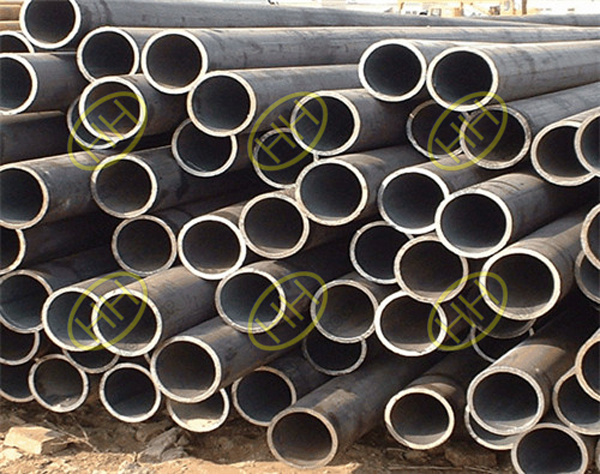In the temperature range of 950-1450°F, chromium carbide tends to precipitate at the grain boundary of austenitic stainless steel. Any exposure or thermal excursion within this temperature range during metal manufacture and use may cause sensitization of the austenitic stainless steel.(What is the difference between stainless steel of five kinds of material?)
Common practices such as welding, stress relief and thermoforming can make stainless steel reach the sensitizing temperature range. The formation of chromium carbide is easily reversed by solution annealing heat treatment. The test methods outlined in ASTM A262 have been developed to test the susceptibility of intergranular attack in austenitic stainless steels.

Austenitic stainless steel pipes
The time and temperature required to produce intercrystalline corrosion susceptibility depends on the alloy composition in the material, especially the carbon content. The figure below shows the time-temperature sensitization curves of 304 stainless steel with different carbon contents.
The figure below shows the time-temperature sensitization curves of 304 stainless steel with different carbon contents.
Three methods are used with austenitic stainless steel to minimize the effects of IGA. The material that has been sensitized can be solution annealed by heating to the temperature at which the carbide dissolves and eliminating the chromium-depleted region. Carbon is then stored in solution by rapid cooling through the sensitizing temperature range. The recommended solution annealing temperature depends on the alloy, usually in the range of 1900 to 2150°F, followed by rapid cooling.
By reducing the carbon content below 0.030%, tolerance to IGA can also be achieved. Low-carbon stainless steels such as 304L, 316L, 317L, etc. are designed to resist sensitization during typical welding operations, but they will not be exposed to the long-term exposure to the anti-sensitive agent during the critical temperature range in use. Higher alloys, more corrosion resistant stainless steels such as 904L and 6Mo alloys have very low carbon content and susceptibility to IGA is not usually a problem.
The addition of stabilizing elements such as Ti, Nb(Cb) and Ta can also increase the increased sensitivity, especially for long-term exposures in critical ranges in use. These stabilizing elements tend to form more stable carbides than chromium carbides in the temperature range of 2250 to 1450°F. Therefore, since the alloy cools from a high temperature, carbon is bound to the stabilizing element and chromium carbide precipitation cannot be performed within a sensitive temperature range of 950-1450°F. Common stable austenitic stainless steels include 321, 347, 20-Cb3, and 316Ti.







